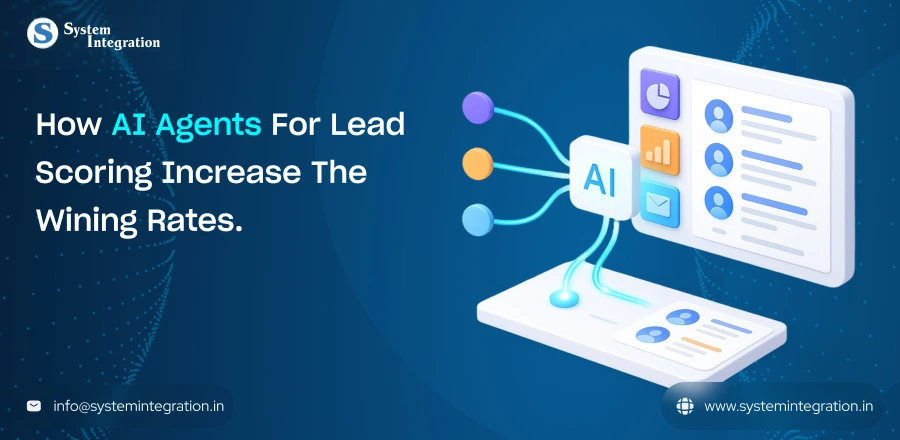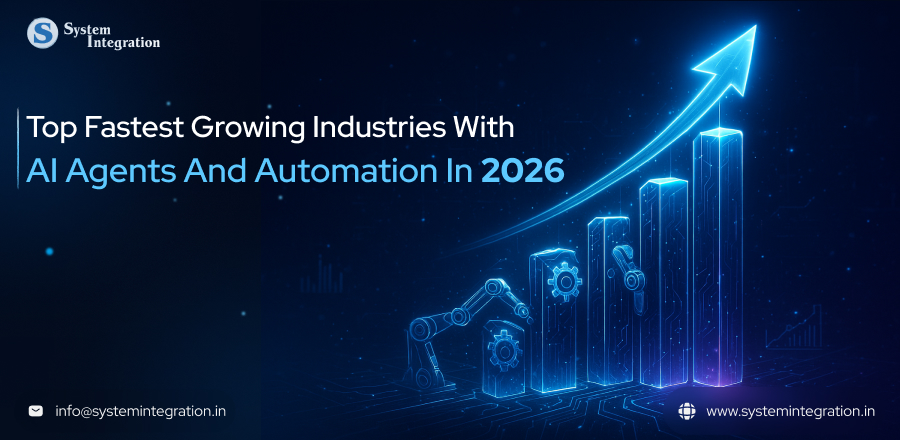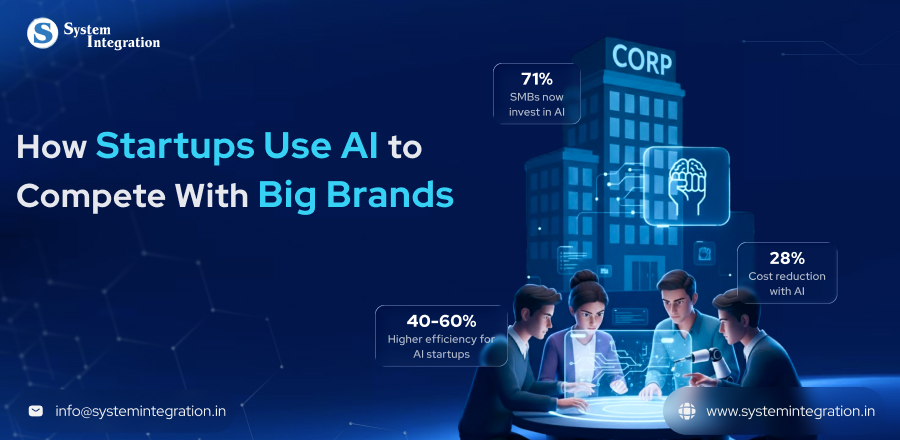Introduction
AI lead generation Agents are quickly changing how companies prioritise outreach, assess prospects, and project revenue. These intelligent systems assist sales teams in concentrating on the most likely to convert opportunities by examining engagement patterns, behavioural signals, and past performance.
In addition to increasing accuracy, this change decreases the amount of manual labour that was previously needed to qualify leads. AI scoring has emerged as a crucial competitive advantage as more businesses search for scalable solutions to improve their sales pipelines.
Adoption of automated decision making also more broadly across industries, such as Streamlining Finance Operations Through Agentic AI reveals how agentic workflows can boost speed and strategic clarity. In sales this is faster routing, smarter pipeline referrals and ultimately a higher win rate. The result is a data powered engine geared for predictability that allows teams to move with accuracy and confidence.
The Evolution of Lead Scoring

In traditional methods, sales forces made estimation based assessments while juggling data entry and static scoring models. Automated lead scoring could be overall more simpler, taking a static view of customer interactions rather than dynamic real time engagement and hidden buying signals.
With the digital interactions becoming more and more mandatory, it’s now time for smarter scoring that could adapt accordingly. This, led to AI lead scoring systems that could continuously learn and forecast with much greater accuracy or confidence.
What Makes AI Lead Scoring Agents More Intelligent

AI Lead Scoring Agents are more than just automation. They are behavioural systems driven by learning and they are good at certain things like:
1. Process huge numbers of behavioral and historical data
2. See things people aren’t so good at seeing
3. Continuously recalibrate scoring models
4. AI can forecast which leads are most likely to convert
5. AI Agents can tailor their algorithms to business needs
6. Integration with existing system for better workflow
Key Features of Contemporary Lead Scoring Agents
Multi Source Data Aggregation
Nowadays, ai agents crawl customer data on CRM systems, websites and ads, social platforms and emails as well as customer logs in order to paint a clear profile for each lead.
Real Time Behavioral Tracking
They monitor things like visits to your site, clicks, downloads, form submissions and length of sessions either updating scores on the fly according to recent activity.
AI Driven Scoring Models
Today ai agents don’t use static rules, rather machine learns to predict probability of conversion based on past successful leads by identifying similar patterning.
Predictive Lead Prioritization
AI agent automation in lead scoring identify the leads quickly who are the most likely to buy soon and press them to sales, so that your teams work only where impact is highest.
Dynamic Segmentation
Leads are automatically funneled into smart segments (hot, warm, cold and nurture-needed) based on behavior and attributes that are constantly changing.
Customizable Scoring Rules
The Marketing team can change or add new rules (job title, company size, engagement score) to score their leads according to ICP and business needs.
Automated Alerts & Workflows
Agents are designed to take action (like sending emails, notifying sales reps or kick off nurture sequences) when a lead crosses a threshold.
Implementation of AI Lead Scoring Agents
Gather All The Accurate Data
Have access to clean and structured, and historical data. Also get the user behavioral data like website visits, email open, downloads and more if available for more accurate results.
Be Clear With The Goal
Implementing AI agents without any aim or goal is like hitting an arrow in the dark, it will result in nothing and total waste of money and time. Thus, establish a clear goal for lead generation, improving conversion rate and more.
Choose The Right Tool
Select the AI tool with robust machine learning algorithms capable of processing large datasets, interpreting unstructured information and smoothly adjusting and structuring it in proper manner.
Integrate It With Existing System
Integrate the AI solution with your existing tech stack. This includes cleaning and standardizing data, and setting up automation to ensure consistent and accurate lead records.
Train The Model As Per The Need
Use the historical data of leads and their outcomes to train the AI model as per your needs. Supervised learning models can be trained on labeled data to learn which factors are most predictive of a successful conversation.
Test And Customize It
Regularly monitor the performance of the AI model and update and customize it if needed with the new data and sales outcomes. This adoptive learning process improves the model’s performance and accuracy over time.
Use Case of AI Lead Scoring Agents in Multiple Areas
Lead prioritization and routing: AI agents analyze vast amounts of data to assign a dynamic score to each lead, indicating their likelihood of conversion. High scoring leads are instantly diverted to the sales team for immediate follow up.
Sales Teams: by focusing on human efforts on the most promising leads, sales teams save time and increase productivity, leading to shorter sales cycles and a higher win rate.
Marketing Teams: freeing up the marketing team by workflow automation of higher lead conversion potentials. This lets the team focus on the other strategic tasks of marketing other than sales.
Revenue & Operations Teams: by automating lead qualification it helps in marketing alignments and sales and boosts the operations. Dynamically scoring leads in real time, routing high scoring leads to sales and personalizing outreach to improve conversion rates and efficiency.
The Future of AI Lead Scoring
1. Advancement in machine learning algorithms
The core backbone of AI lead generation agents is machine learning and day by day its getting smarter. Also upgrading is helping the algorithms to improve accuracy and predictive powers.
2. Integrating with other AI powered sales tools
AI lead generation is not a stand alone tool. It’s deeply integrated into other existing ecosystems to create a powerful workflow where automation is powerful and is triggered instantly and no opportunity is missed.
3. Real time lead scoring
Models can update lead generation in real time as new information regarding that lead comes in. for example, lead visiting the website or downloading. This helps in more agile and instant sales outreach.
4. Data quality paramount
The accuracy of AI models highly depends on the data it is trained on, increasing the importance of maintaining accurate, complete, and up to date data.
Conclusion
The way businesses qualify, categorize, and convert lead is being revolutionised by modern lead scoring agents. These agents provide far better accuracy and speed than traditional scoring techniques thanks to AI scoring, real time behavioural tracking, and deep integrations across CRM and marketing tools.
Adopting intelligent lead scoring agents is now essential for data driven marketing and sales teams as customer journeys get more complicated.
FAQs
It’s a tool that uses AI to automatically evaluate and prioritize sales leads based on their likelihood of converting into customers. It also goes beyond just simple rule based simple tasks and focuses on continuous learning for better experience.
AI for lead generation uses demographic data like job titles, firmographic data like company size, behavioral data like website visiting and email engagements.
Traditional methods use static and rule based information and also it is operated by rules it follows hence results are limited. However, the new AI lead generation method uses real time data and its continuous learning keeps it more reliable and more accurate.
Improvements in lead prioritization and conversion rates can often be seen within 30 to 90 days after implementation of the AI model and it also differs on the bases of which AI model you use.
Its key success lies in the quality of the data used to train the models. As quality is crucial, it’s essential to ensure that the data is accurate, complete, and up to date.





